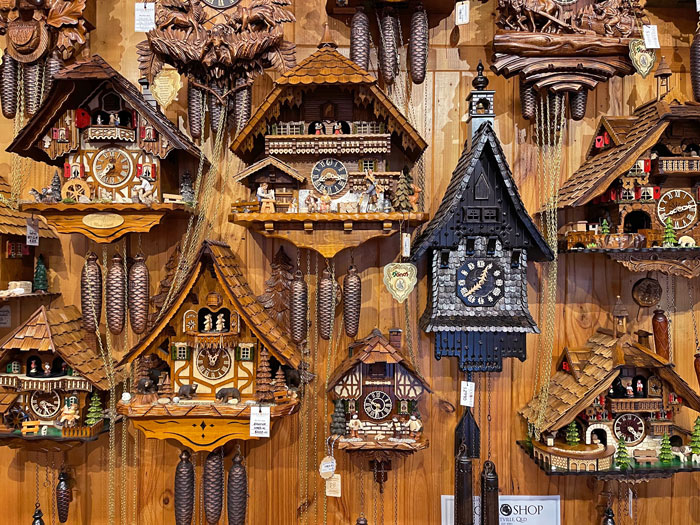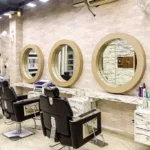Few home accents match the timeless charm and captivating character of a cuckoo clock. These intricate timepieces don’t just keep time—they tell a story, mark tradition, and, most importantly, announce the hour with their unmistakable cuckoo call. But while many homeowners eagerly hang their cuckoo clock as a centerpiece in their living room, the placement of the clock can make a surprising difference in both its sound and longevity.
In this blog, we’ll explore where to hang a cuckoo clock for the best sound, and what to consider when selecting the perfect location.
Why Placement Matters
The cuckoo clock is both an acoustic and mechanical marvel. From the hand-carved wood casing to the intricate inner mechanisms, its design is intended not only to look beautiful but to produce a resonant, audible call. However, poor placement—such as on the wrong kind of wall, near conflicting sounds, or in an overly damp environment—can significantly impact how well the cuckoo’s voice carries.
Proper placement affects:
- Acoustic clarity of the cuckoo sound.
- Clock mechanism stability and longevity.
- Ease of access for winding and maintenance.
- Room harmony, so it complements instead of disrupts.
Best Room Choices for Sound and Function
1. Living Room: The Classic Choice
The living room is the traditional location for a cuckoo clock, and with good reason. These rooms typically feature larger wall spaces, fewer obstacles, and favorable acoustics, particularly if the room is not heavily carpeted or overstuffed with absorbent furnishings.
Tips:
- Hang on a solid interior wall (more on this below).
- Choose a location away from the television or sound systems to avoid audio competition.
- Keep it visible but out of reach of children and pets.
2. Dining Room or Entryway: Aesthetically Pleasing
Dining rooms and entryways offer good acoustics and are often used less frequently for noise-generating activities, making the cuckoo more noticeable.
Pros:
- These areas allow the sound to echo naturally.
- Less likely to be overwhelmed by other daily sounds.
- Provide guests with a charming first impression.
3. Home Office or Study: Unique but Deliberate
Though unconventional, some choose to place a cuckoo clock in a study or office for a vintage touch. If you’re someone who appreciates the punctual hourly reminder, this might work well. Just ensure the sound won’t become a distraction during focused work.
Wall Material and Surface Considerations
Solid Wood or Brick Walls
Cuckoo clocks produce the best sound when mounted on dense walls. Solid surfaces like brick, plaster, or wooden studs act as soundboards, reflecting the cuckoo call outward into the room.
Avoid hanging on:
- Thin drywall or partition walls that may absorb or dampen the sound.
- Hollow walls, which can cause vibrations that affect the mechanical workings.
- Exterior walls, especially if they’re subject to temperature fluctuations or drafts.
Noisy Surfaces
Surfaces near radiators, large air vents, or humming electrical appliances (like fridges) can distort or mask the cuckoo’s sound. Choose a wall that is quiet and stable.
Height and Positioning Tips
Ideal Height
The average cuckoo clock should hang so that:
- The cuckoo bird is close to ear level when standing.
- The weights and pendulum have room to move freely below.
- There’s easy access for winding the chains daily or weekly.
This usually means positioning the top of the clock about 6 to 7 feet (1.8 to 2.1 meters) from the floor.
Avoid Tight Corners
A cuckoo clock sounds best when its sound can travel. Avoid hanging it:
- In tight corners, which trap sound.
- Behind furniture, like tall bookshelves or armoires.
- On walls cluttered with other frames or decorations.
Leave at least 1-2 feet (30–60 cm) of open wall space around the clock.
Environmental Factors That Affect Sound
Humidity and Temperature
Cuckoo clocks are finely crafted, often from untreated or lightly treated wood. They are sensitive to moisture and heat.
DO:
- Keep the clock in a temperature-controlled environment.
- Use a dehumidifier in high-humidity regions.
- Ensure no direct sunlight hits the clock, which can warp the wood over time.
DON’T:
- Hang above a fireplace or near a wood-burning stove.
- Place near a bathroom or kitchen where steam may rise.
Flooring Matters
Believe it or not, the type of flooring below your cuckoo clock can affect how well its sound resonates.
- Hardwood or tile floors allow sound to travel better.
- Thick carpeting can muffle the cuckoo’s call.
You don’t need to remodel your home—but being aware of this can help you position the clock where it’s best heard.
Practical Considerations for Use and Maintenance
Chain and Weight Clearance
The chains and weights that drive a mechanical cuckoo clock need vertical clearance. Weights usually descend between 3 to 6 feet depending on the model.
Make sure:
- There’s enough open wall space underneath the clock.
- You don’t hang it above furniture where weights may knock into it.
- It’s not too high to reach the chains comfortably.
Noise Sensitivity
Are you or your family sensitive to noise, especially during nighttime hours?
Solutions:
- Many modern cuckoo clocks have a night shut-off feature, which silences the call between designated hours.
- Some also offer volume control or use quartz movements with electronic sounds, which can be softer than traditional mechanical cuckoos.
If noise is a concern, avoid hanging the clock near bedrooms.
Testing Your Clock Location
Before permanently hanging your cuckoo clock, do a sound test:
- Temporarily mount the clock using a strong nail or hook.
- Set the time forward and listen to the cuckoo at various hours.
- Walk to other parts of the room and even adjacent rooms to test how far the sound carries.
- Adjust placement if necessary.
This ensures you’re not just getting good volume, but also pleasant resonance and sound projection.
Summary: The Ideal Location Checklist
Before finalizing your cuckoo clock’s position, check the following:
✅ Mounted on a solid, interior wall
✅ Not near loud electronics or machinery
✅ Away from direct sunlight, humidity, and heat
✅ At a height that allows weights to fall freely
✅ Surrounded by open space, not tucked in a corner
✅ In a room where the sound can carry clearly
✅ Not directly adjacent to sleeping areas (unless you prefer it)
Final Thoughts
A cuckoo clock is more than just a timepiece—it’s a slice of history, craftsmanship, and personality. Whether you’re a collector or a first-time owner, taking time to consider where to hang your clock ensures you’ll enjoy not just its look, but its cheerful sound, for years to come.
With proper placement, your cuckoo clock will fill your home with charm, character, and that unmistakable hourly cuckoo call—clear, crisp, and resonant.






